
While strawberries are eaten in salads, smoothies and even cooked dishes, their green stems are not edible. Strawberries, though tasty, are actually flesh sacks that emerge from the plant to protect the tiny black seeds. The stems emit a poison that wards off pests, and could potentially cause harm or discomfort if ingested. While the strawberries themselves are generally safe, it's best to avoid eating the green part.
Defining a Strawberry
To understand the potential dangers of a strawberry, it would help to understand what a strawberry is in the first place. First, a strawberry is not a berry. Botanically speaking, it’s a receptacle – or the thickened part of the stem where the flower and the flower’s organs are situated. Loquats, pears, apples, quinces and rowans are all also receptacles. The fruit of the strawberry are actually the dark seed-like pods, called achenes, that sit on the outside of the strawberry. Each of these pods is actually an ovary protecting a seed.
As such, the green leaves that form the cap of a strawberry actually make up the strawberry blossom’s calyx. These are the leaves that initially protect the blossom’s bud and receptacle.
A Rose by Any Other Name...
Strawberries are members of the rose family, which also includes peaches, apples, apricots, plums, almonds, pears, cherries, raspberries and the family’s namesake, roses. One of the key characteristics of this family is the fact that all members of this family produce hydrogen cyanide -- a highly fatal poison. How this poison is manifest differs from species to species -- peaches, plums, cherries and apricots store the cyanide in their pits. Sweet almonds have cyanide levels miniscule enough that they can be eaten raw. Bitter almonds, however, are banned in the United States due to their toxicity. For the most part, roses store their cyanide in their seeds or pits. Strawberries, however, are different.
A Strawberry's Poison
As a strawberry is picked, the plant’s hydrogen cyanide is vented in gas form through the leaves as a deterrent to pests. As such, the green stem of a freshly picked strawberry would still have its allotment of hydrogen cyanide. The cyanide will fade away in time, and fully dried strawberry leaves have been used safely as tea. There is no scientific evidence to suggest that the cyanide actually penetrates the receptacle itself.
Final Recommendation
It’s impossible to determine how eating a whole strawberry -- including the calyx -- will affect a person. Too many factors directly play into this calculation, including the age and health of the eater, how long has it been since the strawberry was picked, if the strawberry was heat-treated and how many strawberries the person ate.
While fatalities from eating strawberries are rare, consumption of strawberry calyxes may cause severe digestive distress, including diarrhea. While eating a strawberry whole may cause no harm, the potential for injury is real and grave. Young children, pregnant women and the sick should avoid strawberry leaves.
Besides the cyanide issue, strawberry leaves are unsafe to eat because much of the nation’s domestic production is treated with pesticides, which absorbs into the leaves at a higher rate than the receptacle. All in all, this part of the fruit should be avoided.
Related Articles
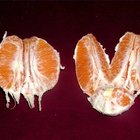
Information About the Orange Fruit

Is Wheat Grass an Alkalizing Food?

Description & Characteristics of ...

List of Wild Edible Plants & Berries in ...

Types of Greek Fruits & Vegetables

How Much Fiber Is in a Tangerine?
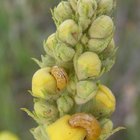
What Foods Attract Maggots?
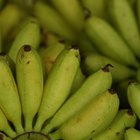
List of Tropical Fruits

How Are Strawberries Processed?

Tanqueray Gin Ingredients

Places to Pick Wild Blueberries in ...
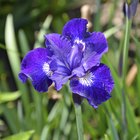
What Does a Purple Iris Symbolize?

Are Buckeyes & Chestnuts the Same?

Is an Orange Healthy to Eat for Your ...

Different Types of Fruits & Vegetables

Red Clover for Acne

Different Names for an Eggplant
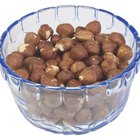
What Kinds of Nuts Don't Grow on Trees?
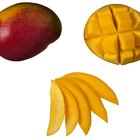
Does Mango Have a Core?

Bitter Melon for Acne
References
- Agricultural Marketing Resource Center: Commodity Strawberry Profile
- University of California’s Division of Agriculture and Natural Resources: Strawberries: Safe methods to Store, Preserve, and Enjoy
- University of Copenhagen's Department of Plant and Environmental Sciences:How Plants Defend Themselves Against Being Eaten: Hydrogen Cyanide
- Gray, Ava: "The Botanical Text-book: An Introduction to Scientific Botany, Both Structural and Systematic : for Colleges, Schools and Private Students", p. 414
Writer Bio
Frederick Reese is an author and political journalist who has covered current affairs, culture and society for various print and online publications. Reese holds a B.A. in art and art history from Colgate University.
Photo Credits
Ablestock.com/AbleStock.com/Getty Images